When you think back to your high school biology classes, you might remember that largest single celled organisms are usually small. What if we were to tell you that these unicellular organisms could grow longer than you are tall despite having one cell?
With that question in mind, we are going to look at the largest single celled organisms in the world. You might want to sit down for this: most of what you know about these organisms’ size is about to change.
What Is a Single-Celled Organism?
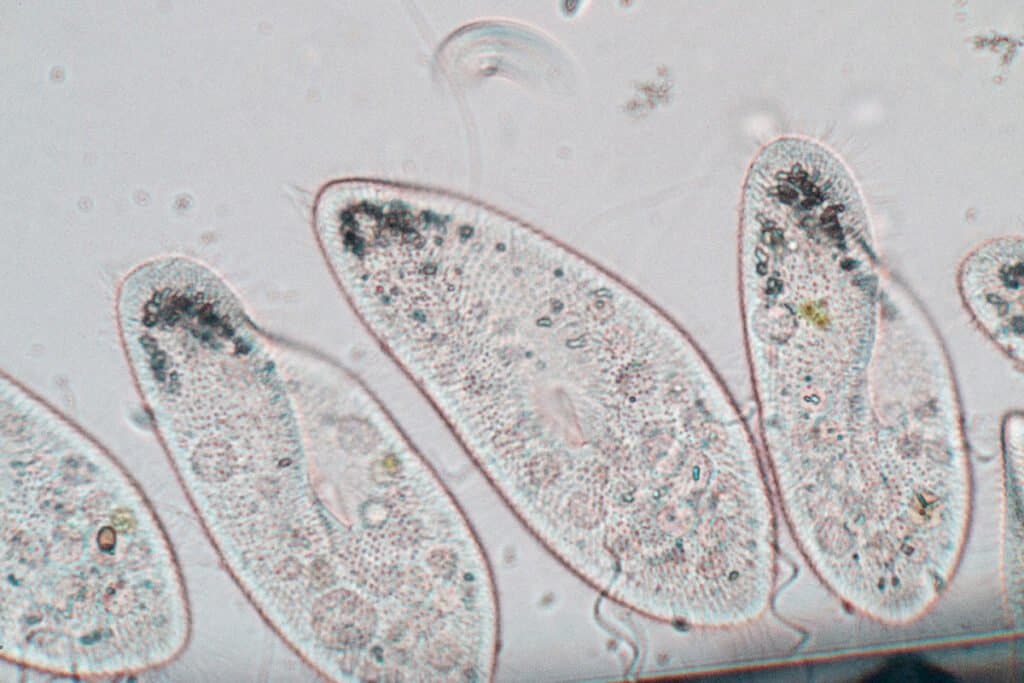
Single-celled organisms are self-explanatory; they’re organisms made of one cell.
©Rattiya Thongdumhyu/Shutterstock.com
In case you haven’t sat down to study biology in a little while, let’s take a minute to define the term: single celled organisms. The largest single celled organisms (or unicellular) are organisms that consist of a single cell, and they can either be prokaryotes or eukaryotes.
Prokaryotes lack a distinct nucleus that contains their genetic material. Eukaryotes have a membrane-bound nucleus that contains their genetic material.
Now that we’re all caught up, we are going to examine the largest single-celled organisms that exist in the world today.
The 10 Largest Single Celled Organisms
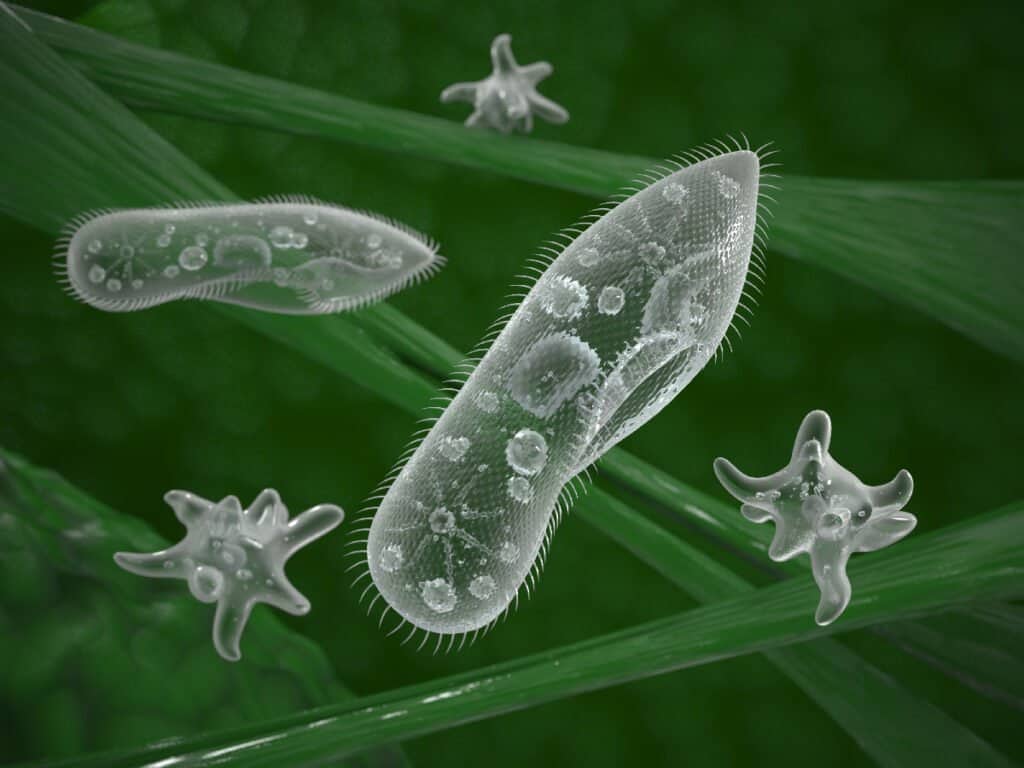
Single-celled organisms are bigger than you think!
©iStock.com/wir0man
We do have to address the fact that these organisms are listed by their largest recorded sizes. Some of them might have the potential to grow even larger than they are listed here. For that reason, the list is generally accurate in terms of the order of these organisms.
However, some of the organisms with similar sizes could be found in larger or smaller variants relative to others. Thus, it would be possible to find a slime mold that’s bigger than a Caulerpa Taxifolia, for example.
Moreover, it’s important to recognize that some genera, specifically Caulerpa, have many species that would be larger than any other single celled organisms. Rather than simply list 10 different species of Caulerpa, we’re going to explore 10 of the largest single celled organisms to show you the diversity of these beings.
10. Stentor

Stentor is often found in high school classrooms
©iStock.com/Sinhyu
A Stentor can reach sizes of about 2 millimeters. That size might not sound too impressive, but it’s very large relative to the size of other unicellular creatures. Stentorsare single celled organisms that most people who have taken biology are familiar with. They are usually the type of unicellular organism that students see under a microscope for the first time, moving about using cilia.
9. Spirostomum

These single-celled organisms are also commonly studied by novice biology students
©Maple Ferryman/Shutterstock.com
The Spirostomum are actually in the same family as Stentor, but these are much larger. In fact, some of the species can grow up to 4 millimeters in length. These unicellular creatures are known for their worm-like looks and their flat “tails”, the end of them that typically contains the excretory vacuole.
8. Chaos Carolinensis
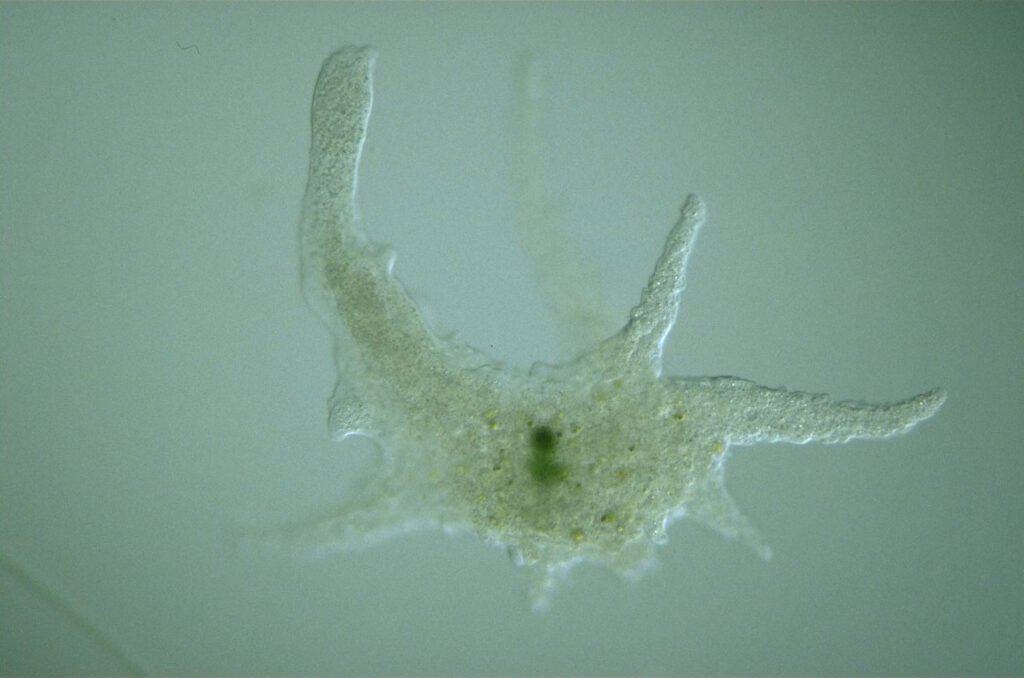
Giant amoebas can actually be damaged by a slide cover
©dr.Tsukii Yuuji / Creative Commons – License
The Chaos carolinensis can grow to sizes of 5 millimeters in length. These organisms are also known as the “giant amoeba.” They are known to feed on bacteria, protists, algae, or other small invertebrates. Like many amoebae, Chaos has a flexible cell membrane, so it’s possible for the organism to constantly alter its shape and move by changing the flow of the endoplasm. These organisms are easily studied under a microscope with low magnification, and they can have many nuclei, hence the Chaos moniker.
7. Gromia Sphaerica

confounded the scientists that first discovered them
©Mikhail Matz / This work has been released into the public domain by its author, Mikhail Matz. This applies worldwide. In some countries this may not be legally possible; if so: Mikhail Matz grants anyone the right to use this work for any purpose, without any conditions, unless such conditions are required by law.
The Gromia sphaerica organism can grow up to 38 millimeters in size. This unicellular creature is a recent discovery, only found for the first time in 2000. These are testate amoebae, meaning they have an organic shell. These organisms are about the size of a grape, and they are very porous. A point of interest is the apparent rolling locomotion that allows them to leave trails, an action that unicellular creatures were thought incapable of doing.
6. Valonia Ventricosa

The Sailor’s Eyeball is a large, unicellular organism with a squishy membrane
©Valentin Ayupov/Shutterstock.com
The Valonia ventricosa is perhaps the weirdest and largest single cell organism, and it can grow over 2 inches in diameter. This unicellular creature is also called sailor’s eyeballs, but they are algae. Although they look like stones, their membrane is soft and it’s easy to pop them. Some people accidentally bring them home into their fish tanks, these algae can easily reproduce and become harmful to other organisms in the aquarium.
5. Spiculosiphon Oceana
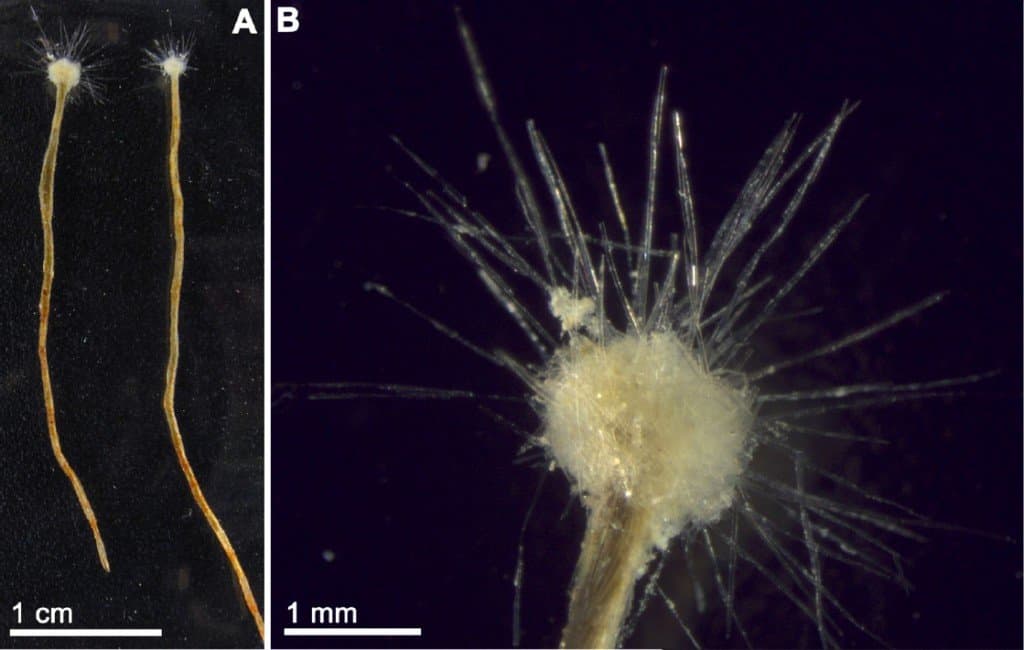
These eukaryotes are sponge-like but still unique
©Manuel Maldonado, María López-Acosta, Cèlia Sitjà, Ricardo Aguilar, Silvia García & Jean Vacelet / Creative Commons – License
The Spiculosiphon oceana is a massive eukaryote that grows up to 2 inches long. This largest single cell organism looks and behaves similarly to some species of sponges. Like Gromia sphaerica, this organism is a relatively new discovery, only being found in 2013 off the coast of Spain. Not only does this look like a sponge, but it also behaves like one by creating a shell of spicules. The scientists that discovered this species were very surprised by the similarities that this species shares with sponges.
4. Acetabularia
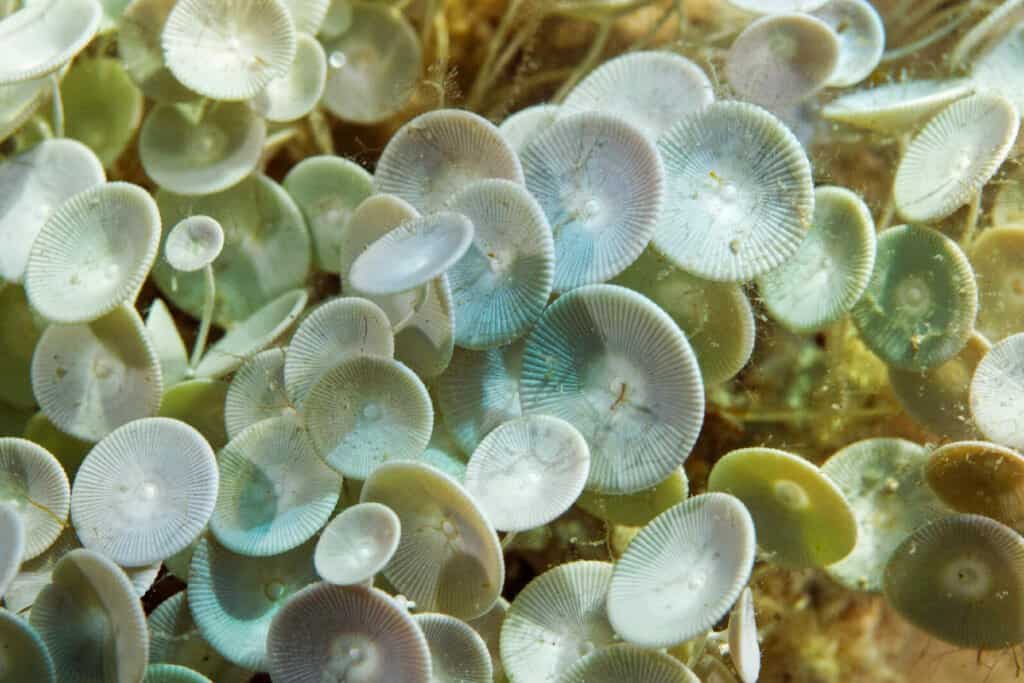
Although they look like mushrooms, they’re algae
©iStock.com/Goran Safarek
This organism is a mushroom-shaped algae that can grow upwards of 4 inches high and lives in large clusters. Acetabularia is sometimes called Mermaids Wineglass, and it’s also a multinucleate organism, meaning it has several nuclei throughout its cell. This particular species has a claim to fame as it was used by Joachim Hammerling to show that genes are encoded by DNA in Eukaryotic creatures.
3. Syringammina Fragilissima

These amoebas are very mysterious
©Cedhagen, Tomas / Creative Commons – License
The Syringammina fragilissima is an amoeba that can reach sizes of 8 inches in diameter. That’s a massive single celled organism! This particular largest single cell organism is interesting in that it uses creates a shell called a test using sediment and sand from the environment. Ultimately, this organism becomes hundreds of tubes that other creatures may live in. Not much is known about this organism, and that makes it one of the most unique on this list. We don’t even know how it eats or reproduces!
2. Slime Molds
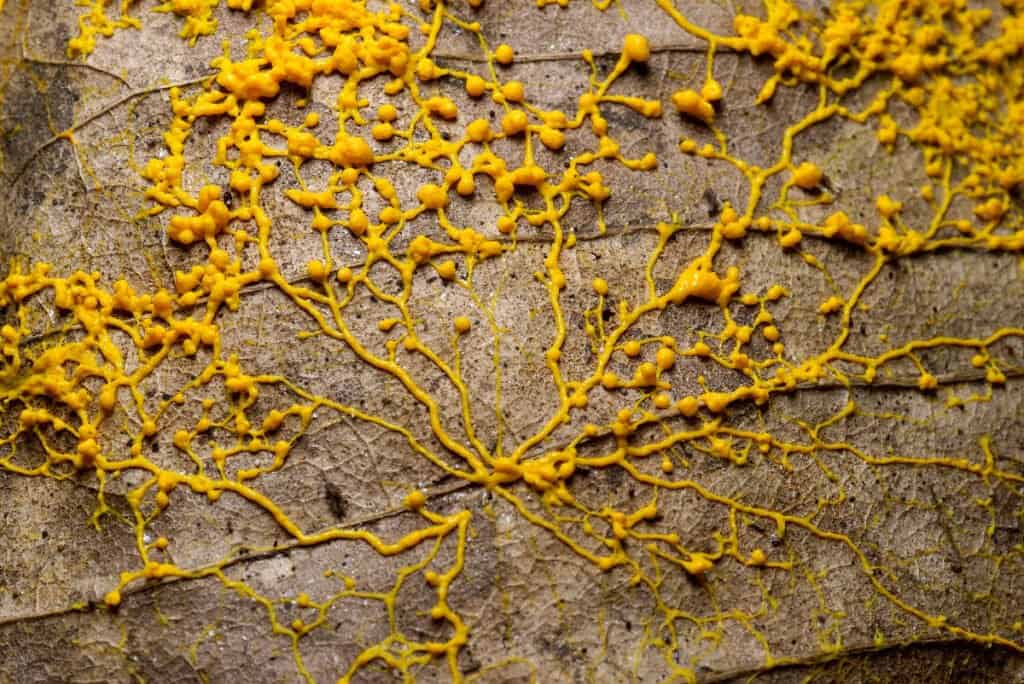
Plasmodial slime molds are large organisms that can merge!
©yamaoyaji/Shutterstock.com
As one might imagine, slime molds are not the official name of these eukaryotic organisms. However, 900 species of slime molds exist, and they can reach sizes of 3 feet across at their largest. Although these creatures start as small amoeba-like creatures, they can merge under certain conditions. Plasmodial slime molds, called myxomycetes, do not retain any of their individuality as a single celled the largest single cell organism when they merge; they completely merge into a single, multinuclear cell.
1. Caulerpa Taxifolia
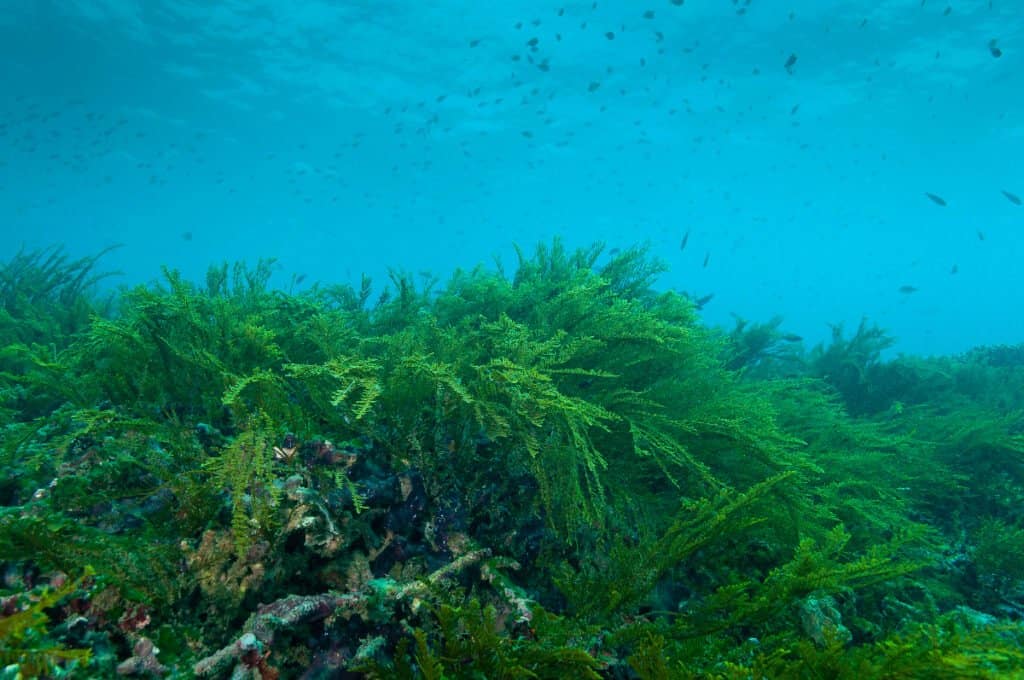
Caulerpa taxifolia is a type of seaweed and the largest unicellular organism!
©Jesus Cobaleda/Shutterstock.com
Caulerpa taxifolia has the honor of being the largest single cell organism on the planet, and it can reach 10 feet long. This unicellular organism is a form of seaweed, and it’s known for being highly invasive and negatively impactful for other organisms and even humans alike. The organism is very hardy, capable of surviving out of water for days, and able to reproduce from small pieces of the whole organism.
What Is the Largest Single Celled Organism?

Caulerpa Taxifolia can reach 10 feet long!
©SomprasongWittayanupakorn/Shutterstock.com
The largest single-celled organism is the Caulerpa Taxifolia. These organisms are single cells that have many different nuclei. They’re capable of reaching 10 feet in length or even more.
Final Thoughts on the Largest Single Celled Organisms
A very important takeaway from this article should be that we are still discovering some of the largest unicellular organisms to this day. Scientists have discovered new organisms on this list as recently as a decade ago. That means we could still stumble upon new additions to this list.
Future scientists might even discover that an organism they believed to be multicellular could be single-celled!
The photo featured at the top of this post is © Valentin Ayupov/Shutterstock.com
Thank you for reading! Have some feedback for us? Contact the AZ Animals editorial team.






